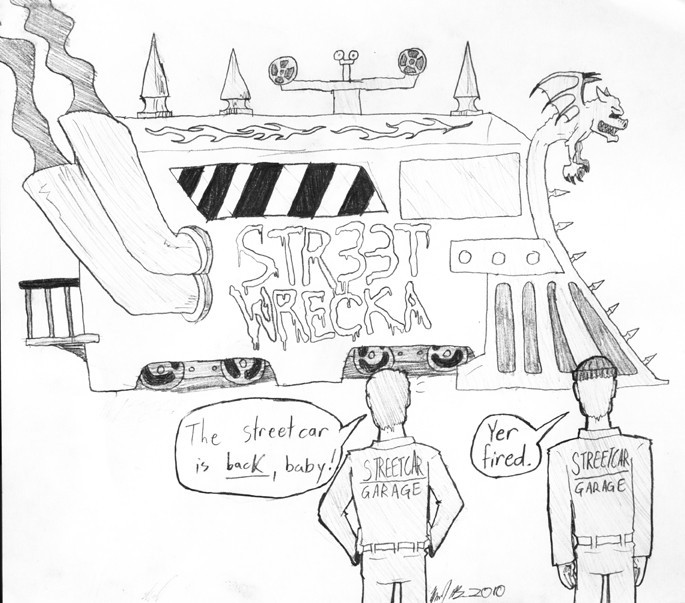Electric transit: Ahead of its time
Winnipeg had a viable green transportation system long before it was in vogue
In the 1920s and ‘30s, the Winnipeg area had more than 200 miles of streetcar track operated by the publicly-owned Winnipeg Electric Company. Not only did the tracks run up and down almost every major street in the city (Ellice Avenue was a rare exception), but it was possible to travel from St. Norbert to Stonewall, or from Headingley to Selkirk on electric-powered rail transit.
The busiest city routes ran 24 hours a day, and during afternoon peak hours, a streetcar passed through Portage and Main every 23 seconds.
But by 1946, the busy system was in need of major upgrading: few track improvements were made during the war and the majority of the streetcars dated back to the early 1900s. And so, the Metropolitan Planning Committee tabled a report outlining ways to modernize transit in the postwar years.
The committee that undertook the report was predominately comprised of members of automobile associations and traffic engineers, people who were more interested in one-way streets and designing expressways through West Broadway than transit.
Instead of finding ways to make transit competitive with automobiles, the report focused on finding way to get transit out of the way of automobiles. The best way to do this was to get rid of the streetcars. With the exception of the Portage and Main lines, the report recommended the Winnipeg Electric Company gradually replace streetcars with either trolley or diesel buses. While a few streetcars received renovations, the system continued to age, accelerating the pace in which Winnipeggers began using autos to get to work, a show or Eaton’s.
By the time the transit system was taken over by the Metropolitan government in 1953, it was clear that street railway would soon disappear entirely. On Sept. 19, 1955, the streetcars made a ceremonial last run down Portage Avenue.
For the next decade, the majority of the transit system ran on electric trolley buses, which first appeared in the city in 1938. Like the streetcars, trolley buses were powered by electricity channeled to the motor by an overhead wire. Unlike the streetcars, they had rubber wheels instead of rails, and were able to turn to the side of the road to pick up passengers from the curb. By the mid-1960s, the trolley buses were also being phased out, and on Oct. 30, 1970 were discontinued entirely.
It is said that trolley buses were removed to rid streets of the clutter of overhead wires they required, but the fact is that diesel buses were simply cheaper for a transit department to operate.
For nearly 60 years, transportation planning has treated transit as an afterthought, with new neighbourhoods continually built as disconnected cells, while the gap-toothed streetscapes of downtown become increasingly hostile to pedestrian activity. With a new-found but nominal fixation on all things “green,” Winnipeg squabbles over which abandoned rail line to use for a rapid transit bus route.
If the City of Winnipeg was really interested in reducing its impact on the natural environment, it would seek to rebuild at least a few of the miles of streetcar tracks it had in a previous age, powered entirely by electricity, built in places where people are and where they are going.
Streetcars were good for the environment beyond just utilizing electric power. Their proliferation facilitated urban patterns of relatively compact and walkable suburban neighbourhoods, as well as a downtown that was a concentrated centre of business and attraction. Streetcars on the roadways, along with their tracks and passenger waiting platforms, calmed traffic and ensured that a Winnipegger did not have to sit behind the wheel to be considered a full citizen.







